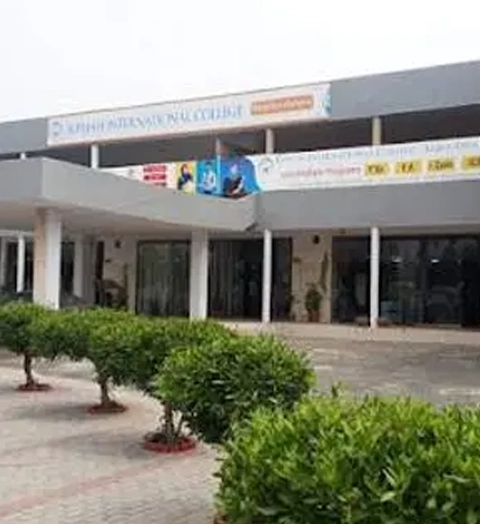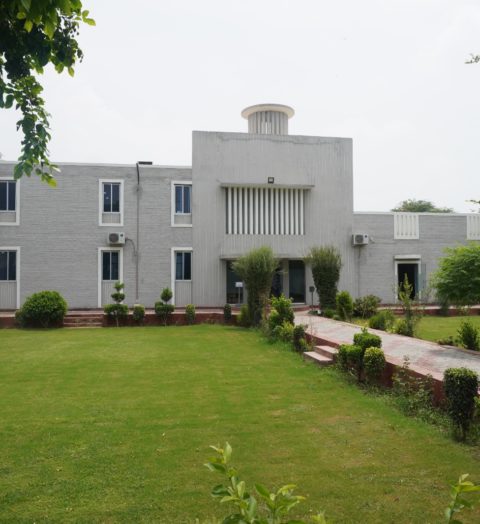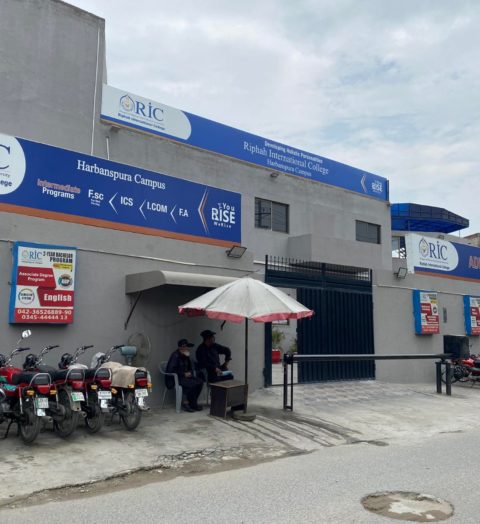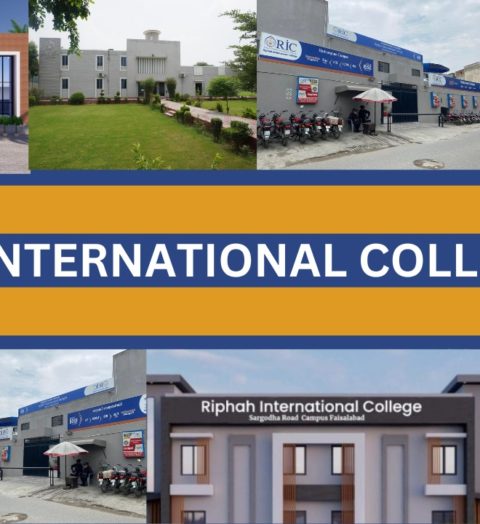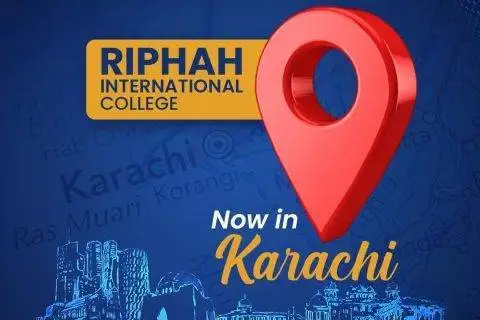Home
March 30, 2021 2025-03-07 11:15Home
Our Values
VISION
Our Vision is to establish at national and international levels, state of the art educational, research, training institutions in line with international best practices, with integration of universal Islamic values and Pakistan ideology, in order to produce dynamic human beings and leaders.
MISSION
Our Mission is Establishment of State-of-the-Art Educational Institutions with a Focus on including Islamic Ethical Values.
VISION
Our Mission is Establishment of State-of-the-Art Educational Institutions with a Focus on including Islamic Ethical Values.
MISSION
Our Vision is to establish at national and international levels, state of the art educational, research, training institutions in line with international best practices, with integration of universal Islamic values and Pakistan ideology, in order to produce dynamic human beings and leaders.




RIC prepares students with the transformative experience and to be well-rounded leaders who make a positive impact on the world.
Our Campuses
Blogs & Articles
What's happening in RIC
Latest News & Events
What's happening in RIC
Student Stories



Reliving Fond Memories: My Best Moments at Riphah International College (RIC)
Choosing an ADP at Riphah International College: A Pathway to Success
Riphah International College: Nurturing Holistic Personality Development
Winter is knocking at the door, and Lahore has already been facing a tough and hazardous phenomenon: smog. Every year, this blanket of pollution disrupts the daily routine by bringing health risks and environmental concerns. Smog is not just something that looks unpleasant; it’s a real threat to our well-being and future. For students, it is essential to understand the causes of smog, its impact, and ways to stay safe.
This blog explores why smog hits Lahore, the dire effects of smog, and what students can do to save themselves from it and create awareness.
What is Smog?
Smog is a combination of the words “smoke” and “fog.” Scientifically, smog is referred to as a mixture of air pollutants mostly at ground level, comprising ozone, sulfur dioxide, nitrogen dioxide, and carbon monoxide that combine in the air to form a thick layer. It is most commonly generated through vehicle exhaust, industrial wastes, and the burning of fossil fuels. These pollutants, upon concentration in the atmosphere, form a thick haze-like layer that emanates visibility problems and interferes with air quality.
Types of Smog
There are mainly two types of smog:
Photochemical Smog: It is brought about when sunlight combines with nitrogen oxides and hydrocarbons to form ozone at ground levels. It is more usual in the warm seasons.
Sulfurous Smog: This forms from the combustion of fossil fuel such as coal and is common in areas where much industrious activities are taking place.
Both types may be seen in Lahore; however, winter smog, also known as “pea-souper,” is more frequent because of the seasonal factors that contribute to limited airflow, which traps the pollutants near the ground.
Why Does Smog Happen in Lahore?
Lahore’s problem of smog emanates from a number of causes. Knowing them will, hopefully, help us join hands for some remedies and lessen exposure. Here are major reasons why smog becomes a problem in Lahore:
Industrial Emissions
Also, a number of obsolete technology brick kilns, chemical industries, and steel mills are distributed around Lahore. Such old technologies emit substantial pollution into the atmosphere. With weak environmental laws and also their inefficient enforcement, industrial emissions are a serious contributor to air pollution.
Vehicular Emissions
The increase in the number of vehicles on the roads of Lahore has degraded air quality over the years. Most of the vehicles run on poor-quality fuel, emitting a high amount of sulfur and nitrogen oxides. Lack of emission checks on vehicles adds to making the problem worse by contributing to the pollution load.
Agricultural Burning
Farmers in surrounding villages burn crop residues, mainly rice straw, right after the harvest, in order to clean the fields quickly. It is a prevalent practice on both sides of the border-Pakistan and India-where large amounts of particulate matter and carbon compounds are emitted into the atmosphere and eventually drift towards urban centers like Lahore. It starts around the time when winter begins and therefore enhances the intensity of smog.
Temperature inversions occur in colder months and trap cooler as well as warmer air together with its pollutants close to the ground. Low wind speed and inversion layers provide the right conditions for smog to settle and hang around for hours.
Effects of Smog on Student Health
While smog is an irritation, it poses very real health effects, particularly to students who are more vulnerable due to their age. Here are some of the ways smog affects health:
- Respiratory Problems: Smog can contribute to or worsen the conditions of asthma and bronchitis among other respiratory conditions. Children and young adults have developing respiratory systems, which are highly prone to damage from these pollutants.
- Eye and Skin Irritation: Smog causes irritation on both the eyes and the skin. Prolonged exposure causes redness and itchiness, leaving skin dry.
- Compromised Immunity: Long time exposure can weaken the immune system of a person who makes people vulnerable to many infections and diseases.
- Poor Academic Performance: Exposure rates to high pollution levels negatively affect cognitive performance. For instance, it has impacted the student’s ability for attention, memory, or even academic achievements.
What Can Students Do to Stay Safe?
Even though smog is a macro-level issue, students can take concrete actions to limit their exposure and minimize damage to health. Some concrete precautions that may be followed include:
Remain indoors on days when the air quality index is particularly poor:
When the level of smog is high, it’s advisable to limit outdoor activities. Avoid exercising or playing sports outside since heavy breathing increases the quantity of pollutants inhaled. Pay attention to local air quality reports to know when it’s safer to be outside.
Use Masks and Air Purifiers:
While indoors, windows should be closed to avoid the entry of smog. If possible, an air purifier can be used at home. When going out, an N95 mask should be used. It filters fine particulate matter.
Hydrate and eat a healthy diet:
Drinking water flushes toxins from the body. A diet rich in antioxidants, fruits and vegetables, also builds immunity and combats a couple of effects of pollution.
Indoor Plants:
Spider plant, aloe vera, snake plant, an indoor plant, has the capacity to purify a certain amount of indoor air by absorption of toxins and increase the oxygen.
How Can Students Create Awareness about Smog?
Awareness is key, and students can be one of the essential messengers about air pollution and how their own practices can help eliminate smog. Here are some ways students can participate in eliminating smog.
Organize Education Campaigns:
Through teachers and school administrators, students can orchestrate campaigns within school systems. Such campaigns may feature lectures, posters, and educational forums by environmental experts.
Social Media Advocacy:
Through social media, students can share information and create awareness by stating facts, posting infographics regarding safety tips, using smog-specific, air-pollution-specific, and environmental protection-specific hashtags for better outreach and visibility.
Carpool and Use Public Transport:
Encourage all friends and family members to carpool, use public transportation, or walk whenever possible. Less traffic automatically leads to less air pollution.
Support Environmental Policies:
Current events will keep the students updated on governmental policy related to air quality and will help students support changes in policy intended to reduce pollution. They could petition, attend an environmental rally, or participate in civic activities that attempt to bring change about.
Conclusion
Smog in Lahore is multifactorial, emanating from industrial emissions, vehicle pollution, and the burning of agricultural material. However, students can reduce their exposure by being more aware and taking practical precautions, which in turn will contribute positively to the cleanliness of the environment. The basic steps taken toward this, like staying indoors when smog is high in the atmosphere, donning protective masks, and advocating change, will go a long way toward making a difference.
Teaching them about smog and pollution instills a sense of responsibility in the students toward the environment. After all, tackling smog requires action to be taken on an individual basis—and students can be key players in creating a healthier future for Lahore.


